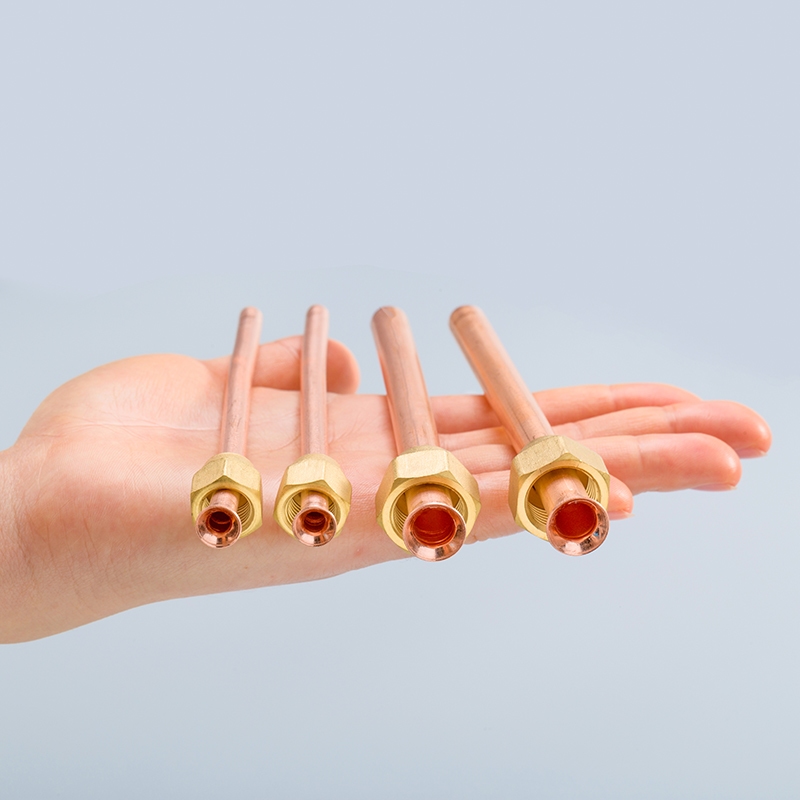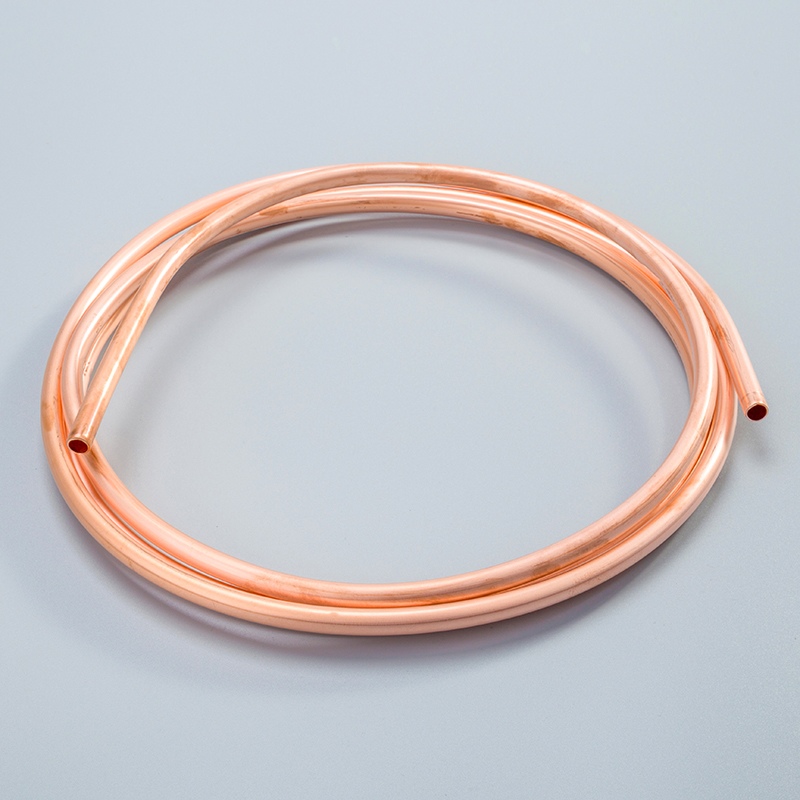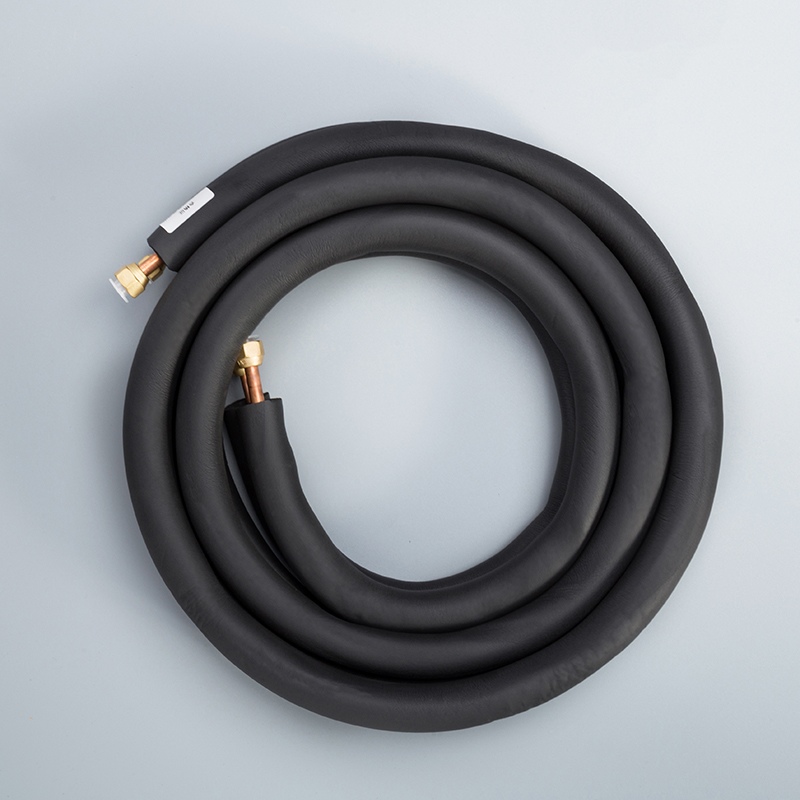Top Tips for Maintaining Insulated AC Copper Pipes

Tips for maintaining insulated air conditioner copper pipes
Insulating air conditioner copper pipes is paramount for maintaining insulated air conditioner copper pipes efficiently. This practice not only ensures optimal energy usage but also safeguards the HVAC system from potential damage. By preventing heat exchange and condensation, proper insulation contributes to lower utility bills and prolonged system lifespan. In this blog, readers will discover essential tips for maintaining insulated air conditioner copper pipes, covering inspection, cleaning, and preventive measures to enhance efficiency and longevity.
Understanding Insulated AC Copper Pipes
Definition and Purpose
Insulated AC copper pipes play a crucial role in maintaining energy efficiency within HVAC systems. Closed-cell insulation materials like cellular glass, elastomeric foam rubber, polyisocyanurate, and phenolic are recommended for cold lines. These materials effectively control condensation and prevent heat gain without requiring an additional vapor barrier, ensuring optimal system performance.
Common Materials and Types of Insulation
Various insulation materials are utilized to protect copper lines in HVAC systems. Fiberglass, Polyethylene Foam, Rubber Foam, and Reflective insulation are commonly used due to their thermal insulating properties, moisture resistance, flexibility, and durability. These materials not only maintain energy efficiency but also prevent condensation, safeguarding the copper pipes from potential damage.
Regular Inspection and Maintenance

Visual Inspection
To ensure the optimal performance of the HVAC system, checking for visible damage or wear on the insulated AC copper pipes is crucial. Any signs of wear or damage can lead to inefficiencies in the system, potentially increasing energy consumption and reducing overall lifespan. By visually inspecting the copper pipes regularly, homeowners can proactively address any issues before they escalate.
Identifying signs of corrosion or leaks is equally important during visual inspections. Corrosion can weaken the pipes over time, leading to potential leaks that may result in water damage or system malfunctions. Detecting these signs early on allows for timely repairs or replacements, preventing further damage and ensuring the continued efficiency of the HVAC system.
Cleaning the Pipes
Maintaining clean copper pipes is essential for optimal system performance. Safe cleaning methods, such as using mild detergents or specialized cleaners recommended for HVAC systems, help remove dirt, dust, and debris that can accumulate on the pipes over time. Regular cleaning not only improves the aesthetic appeal but also enhances airflow and heat transfer efficiency within the system.
Homeowners should adhere to a recommended cleaning frequency to prevent buildup that could obstruct airflow or lead to contamination. By incorporating pipe cleaning into regular maintenance routines, individuals can promote better air quality indoors and extend the longevity of their HVAC systems.
Insulation Check
Regularly assessing the condition of insulation surrounding AC copper pipes is key to maintaining energy efficiency and preventing potential damage. Ensuring insulation is intact and effective involves checking for any gaps, tears, or compression in the insulation material that may compromise its insulating properties. Proper insulation helps stabilize temperature levels within the pipes, reducing energy loss and minimizing strain on the HVAC system.
In cases where damaged or worn insulation is detected during inspection, prompt replacement is necessary to uphold optimal performance standards. New insulation should be installed securely to maintain a consistent barrier against external temperature fluctuations and moisture exposure.
Preventive Measures

Protecting Against Physical Damage
Proper installation techniques are crucial for safeguarding the longevity and efficiency of insulated air conditioner copper pipes. By ensuring a secure and precise installation process, homeowners can prevent potential damage to the pipes, maintaining optimal system performance. Utilizing professional installation services or following manufacturer guidelines guarantees that the copper pipes are securely positioned and insulated, reducing the risk of wear or leaks over time.
When it comes to protecting insulated air conditioner copper pipes, using protective coverings is a practical preventive measure. Insulating line set covers shield the pipes from external elements, such as weather conditions and UV rays, which can degrade the insulation material and compromise its effectiveness. By covering the exposed sections of the copper pipes with durable protective materials, homeowners can extend their lifespan and maintain energy efficiency within their HVAC systems.
Environmental Considerations
To preserve the integrity of insulated air conditioner copper pipes, avoiding exposure to extreme temperatures is essential. Extreme heat or cold can impact the performance of insulation materials, leading to inefficiencies in temperature regulation and energy usage. Properly insulating AC lines against temperature fluctuations ensures consistent system operation and prevents unnecessary strain on the HVAC unit.
Minimizing exposure to moisture is another critical aspect of maintaining insulated air conditioner copper pipes effectively. Moisture accumulation within insulation can promote corrosion and mold growth, compromising both the structural integrity of the pipes and indoor air quality. Implementing moisture-resistant insulation materials or regularly inspecting for signs of moisture intrusion helps mitigate these risks, preserving the functionality and durability of the HVAC system.
Professional Maintenance
When to Call a Professional
HVAC professionals recommend seeking professional assistance when encountering complex issues that surpass DIY repair capabilities. Identifying issues beyond DIY repair ensures timely and accurate solutions, preventing further damage to the HVAC system. Regular professional inspections conducted by certified technicians help maintain the efficiency and longevity of insulated air conditioner copper pipes.
Choosing the Right Professional
Qualifications and certifications are essential criteria when selecting an HVAC technician for maintenance tasks. Certified professionals possess the expertise and knowledge required to handle various HVAC system components effectively. Before hiring, homeowners should inquire about the technician's qualifications, ensuring they are equipped to address specific issues related to maintaining insulated air conditioner copper pipes. Asking relevant questions regarding experience and specialization aids in making an informed decision when choosing a professional for HVAC maintenance.
The AC Therapist delves into the significance of maintaining insulated air conditioner copper pipes, emphasizing their crucial role in enhancing HVAC system efficiency and longevity. By implementing the outlined tips diligently, homeowners can ensure optimal energy usage and prevent potential damage to their systems. Regular inspection, cleaning, and preventive measures are key to safeguarding copper pipes and maximizing system performance. Take charge of your HVAC maintenance today for a more efficient and durable air conditioning experience.
See Also
Best Practices for Maintaining Copper Pipe Coils
Maximize AC Efficiency with Copper Pipe Insulation
Comprehensive Maintenance Guide for Copper Pipes


